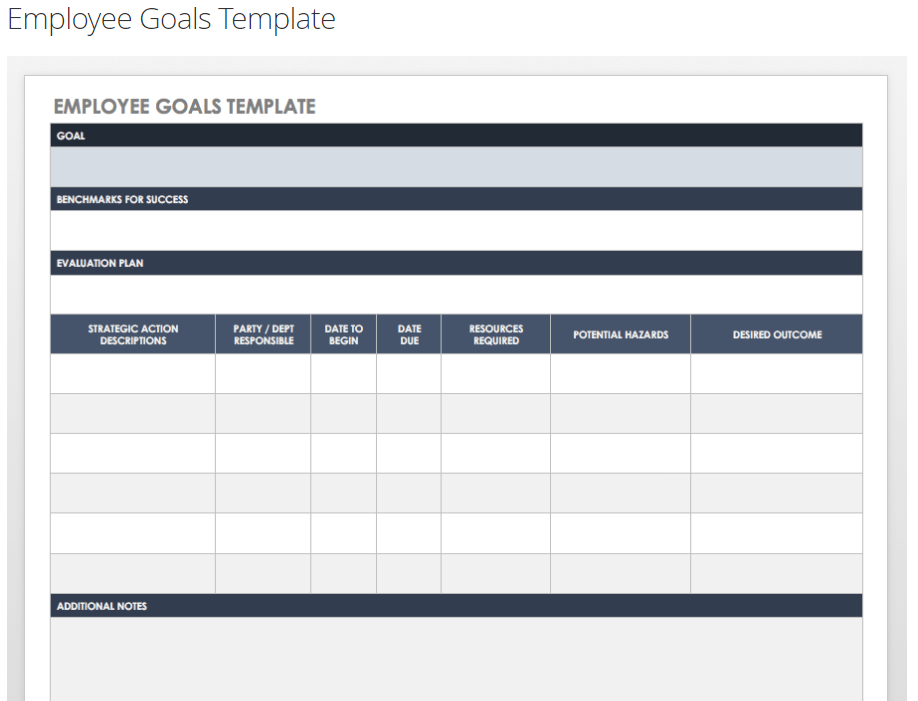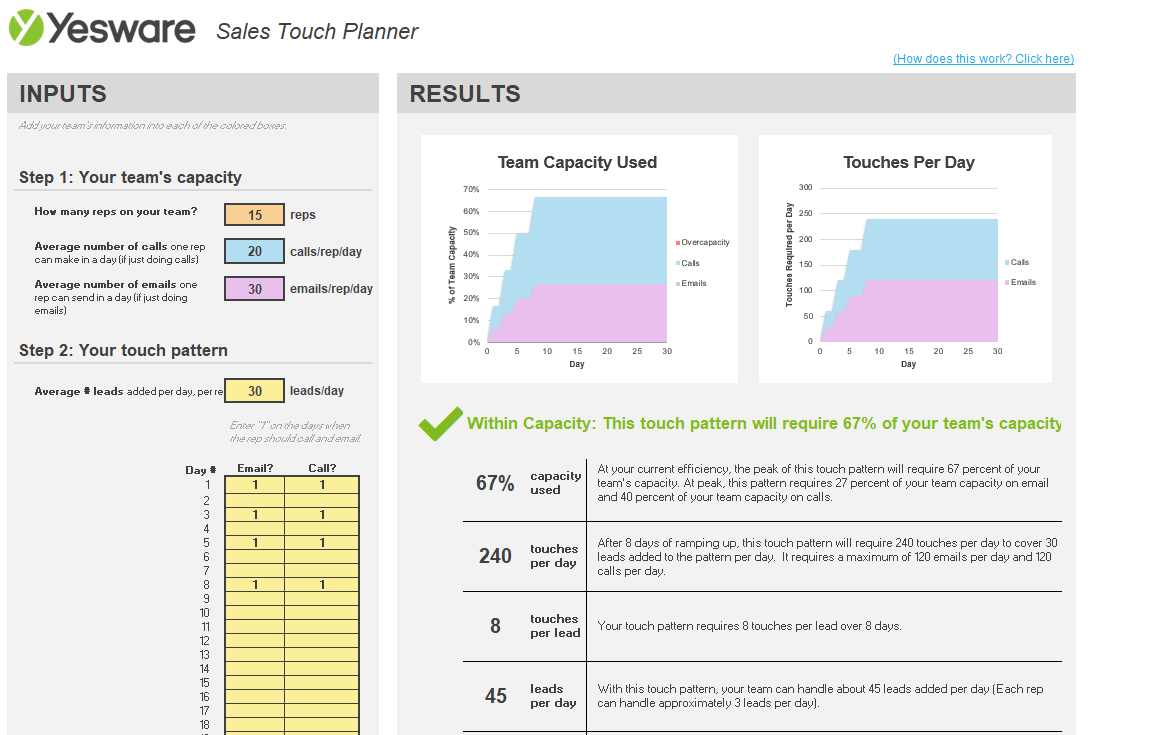It’s easy to set quarterly sales objectives for your sales reps. You simply work out what the company needs in revenue this year – and split that into four. Set the goals for your sales team to reach, and the company wins. It couldn’t be easier, right? But then sales goals are missed. Those amazing profits aren’t realized. And you’re left wondering why.
The truth is, setting more effective goals is the way to reach them. By planning your goals around a few strategic points, you can set goals that aren’t just realistic but are also motivating.
What Are Sales Goals?
Most of us know sales objectives as a set number as part of the sales pipeline. Usually revenue. Make $50k this month, and you’ve reached your sales goal. Well done!
But this article will, hopefully, change that perception. You won’t see a sales goal or target as just numbers on a screen anymore.
You’ll see them as individual actions. Because a sale isn’t just a sale. A healthy sales cycle was planned out. A sales manager helped embrace the team’s goals. Sales reps were involved in calls, demos, emails, etc., necessary to get that sale.

So breaking sales down into these individual goals makes for a far more effective target. A more tangible target.
Let’s explore.
How To Set Your Sales Goals
First things first. Your yearly revenue target. No matter how unrealistic your target (some targets are simply unreachable), you can plan out a viable strategy to get as close as possible to your sales goal. Venngage has a handy guide on communicating strategy that can help in this instance.
Now split that revenue into four quarters. But not equally. Take into account the seasonal challenges of each quarter. Are you selling to businesses that slow down over the festive season? Or do they increase their output over that time?
A small, simple consideration that could significantly impact your overall plan. Push harder in the good months.
Pretty obvious. But now that that’s been established…
Set Smaller Targets
Don’t just focus on the quarters. Break the quarters down into months. Weeks. Days, if you have a small and easy-to-manage team. Each sales rep should know their daily sales goal, setting sales goals per hour to reach the daily sales goal.
Daily reporting to sales managers is best – but a tad unrealistic for larger teams. At the very least, set monthly targets and review them as such. A monthly sales meeting is good – weekly is better.
If you’re using Slack, standup apps such as Standuply can help track your team’s performance.

The failure to reach goals and sales targets is because they’re often not made actionable enough. Or measurable or reachable.
So let’s look at these three essential steps to creating an effective sales goal for your sales reps.
Actionable, Measurable, Realistic
A sales rep doesn’t need to know the annual revenue goal for the company. Your sales team needs to know their daily goal and what they need to do to achieve it. Instead of telling your sales staff to reach a set number, break it down into a sales process anyone can follow and set daily sales goals. How many calls or appointments does the sales rep take to make the sale?
How are conversions on calls and appointments?
Use those metrics to determine what actions your staff needs to take to achieve their targets. And everyone will have an easier time reaching their goals.
This also makes them more measurable. Sure, you could compare revenue goals to actual results and make judgments. But if you’re tracking actions, it’s much easier to see who’s lagging behind because of a lack of effort.
We like to believe that all our staff gives their best every day. But sometimes, that just isn’t true. And we’re never 100% sure – are they lazy or just having a run of bad luck?
This approach has another benefit, too – identifying problem areas for training. Is a staff member reaching all his action targets but not making revenue? Great – you know where the problem lies.
We can then investigate whether they’re identifying poor prospects or whether they’re just bad at selling – and train accordingly. A key part of building a winning sales team.
Lastly, goals need to be realistic. If your staff spends an average of 1 hour on appointments, you can’t expect them to do 50 appointments per week. Sure, during crunch times, goals can be upped a bit. But it’s better to raise goals in increments.
For example, if they’re only managing 5 appointments per week, move that up to 8. Then 10. Then 15.
And so forth.
The same applies to any goal. Don’t just raise a goal all at once. Let them slowly build their confidence and skill as they overcome tougher and tougher challenges.
Now that you’ve got a good idea as to how to set effective goals, let’s take a look at this method in practice.
Let’s Improve a Goal
The goal: $50k in Month 4 (Q2).
A quick and easy goal. It helps that the goal is broken down into one month. But we can do better.
So to get to the actionable goals, we have to work backward. For the sake of this exercise, let’s say the sales revenue is $10k. So, John (our hypothetical rep) needs to close 5 clients by the end of the month.

And to close a client, John needs to do a demo. But only 20% of demos actually close the deal.
Perfect. John needs to demo 25 clients this month. So, he’ll have to do 2 or even 3 demos a day as he heads toward the end of the month.
So let’s say 10% of sales calls end up in a demo.
That means John will have to call 250 prospects to get 25 demos.

Now we factor in time – and here’s where we can start to see if our goal is realistic.
Let’s average 10 minutes per call and 60 minutes per demo.
So that’s (10*250)+(25*60) / 60.
Which brings us to around 67 hours in total. So this goal is more than achievable in a month’s time. We may even want to raise the bar a little. But if this is what we need and want this month, good.
Now we can set tiered goals – with bonus incentives for reaching the higher tiers.
Or split the goals into weekly milestones. Maybe 150 calls (or emails) for the first week. Then 50 calls and 7 demos. Then 50 calls and 8 demos. Then 10 demos.

Or whatever makes the most sense.
5 Examples of Sales Goals for Reps
Using the above method, let’s look at a few examples of sales goals examples:
Example #1
Bad: $300k this quarter.
Better: $100k per month.
Great: $25k per week.
Example #2
Bad: Close 10 clients this month.
Better: Make 250 Outreach calls and 20 live demos to close 10 clients this month.
Great: 63 calls and 5 demos per week.
Example #3
Bad: Generate 30 new leads this month.
Better: Make 120 sales calls to generate 30 new leads this month.
Great: 30 calls per week.
Example #4
Bad: 35% boost in sales this month.
Better: Close 15 more clients this month.
Great: 20 cold calls per day.
Example #5
Bad: $50k in profits this month.
Better: $150k in revenue this month.
Great: 50 sales calls per week.
You get the idea. Break the goals into actions, and set the smaller sales goals your sales rep will need to fulfill. Or, like the first example, bite-sized chunks. Looking at the big picture right off the bat can often overwhelm your sales team.
How to Track Your Sales Goals Effectively
As we’ve mentioned, actions are, in essence, more measurable than a $ amount on its own.
But manually measuring these sales team actions can be a pain. Yet it’s important that we do.
Some good sales measurement tools are Lucep and Base – both of which offer
free trials.

But it’s important to test whether your current toolset can measure these metrics first.
It could be viable to have each rep track their own figures manually. But it can also waste time that could otherwise be used for selling. However, if you have no other choice, tracking the figures and taking the wasted time on the chin is best.
They’re helpful when mapping out your action goals.
Tips on Achieving Your Sales Goals
You’ve already got your actionable goals down to the week for each rep in your sales teams. But goals still aren’t being achieved.
Is It the Goals or the People?
First, trace the source of the problem.
Are all your reps (or a high number of them) missing their goals? Then it may be the goals themselves that are too ambitious. It’s good to have challenging goals, but unrealistic goals week after week can grind down morale and lead to an ineffective, uninterested sales team.
It’s important not to make goals too easy. Most humans are cursed with the “just enough” mentality. They won’t go too far beyond an easy goal.
If a few reps repeatedly miss their goals, it’s time to identify the problem individually. Sit them down and have a talk. Try to pinpoint problem areas. And then provide the training they might need.
It’s sad, but sometimes folks lose motivation. And it’s very hard to get it back. If this is the case, it might be time to part ways.
There are a few things you can try before going to that extreme…
Motivate Them
We’ve already mentioned tiered goals. They can be a huge motivation booster. More people are financially motivated than they care to admit. Another obvious motivation booster is ensuring each employee has a clear and effective training plan to keep growing and developing.
As Richard Branson once said,
“Train people well enough so they can leave, treat them well enough so they don’t want to.”
4 Sales Goals Templates from Around the Web
Setting up your own templates can be challenging – but fun. However, if you don’t have the time, here are a few templates that can easily be adapted to suit your sales goal needs.
1. Smartsheet Templates

Smartsheet has a ton of great templates here. Business goals, personal goals, and SMART goals – there’s something for every application here.
2. Yesware Sales Goal Templates

Here’s a template from Yesware that we found very helpful – especially if you’re having trouble setting actionable goals.
It may seem a little complicated at first, but it’s easier (to use) than it looks.
3. ThinkBusiness Target Tracking Template

Here’s a helpful template if you’re unsure how to track and compare your sales goals. A great way to keep yourself on the right path – and stay accountable.
4. Spotio’s Field Sales Template

Here’s a template specifically designed for your field sales reps. To help them keep themselves accountable. It’s a step-by-step document that any rep would find useful.
Want More Great Resources on Sales Goals?
Here are a few resources to help you out even more.
Goal Setting For Reps – Michael Neuendorff
Goal Setting For SalesPeople
Manage Your Career In Sales from Joe Verde dives in deep. It gets to the real heart of goal setting and is bound to help you set smarter, more actionable goals.

Nothing this blog post doesn’t do, right? But this book is highly recommended. Here are other sales books and some great lead generation books you could buy.
Set Smarter Goals and Start Winning
And there you have it.
You’ve got direction. You’ve got your templates. You’ve even got some extra resources to take this thing further. Additionally, if you need an extra pair of eyes or want to scan through another perspective, here’s a guide to help you set up a realistic growth model.
So start setting smarter, more effective goals. And experience the difference it can make to your business.
BONUS: Want More Leads For Your Reps?
At UpLead, we help companies get more leads quickly. And, by extension – more sales. (BTW: UpLead is trusted by companies such as Google or Amazon).
If you’re looking to get your reps some qualified prospects quickly, try UpLead. It’s free for 7 days, and with our tiered pricing model, there’s an affordable option for you – no matter your budget.









